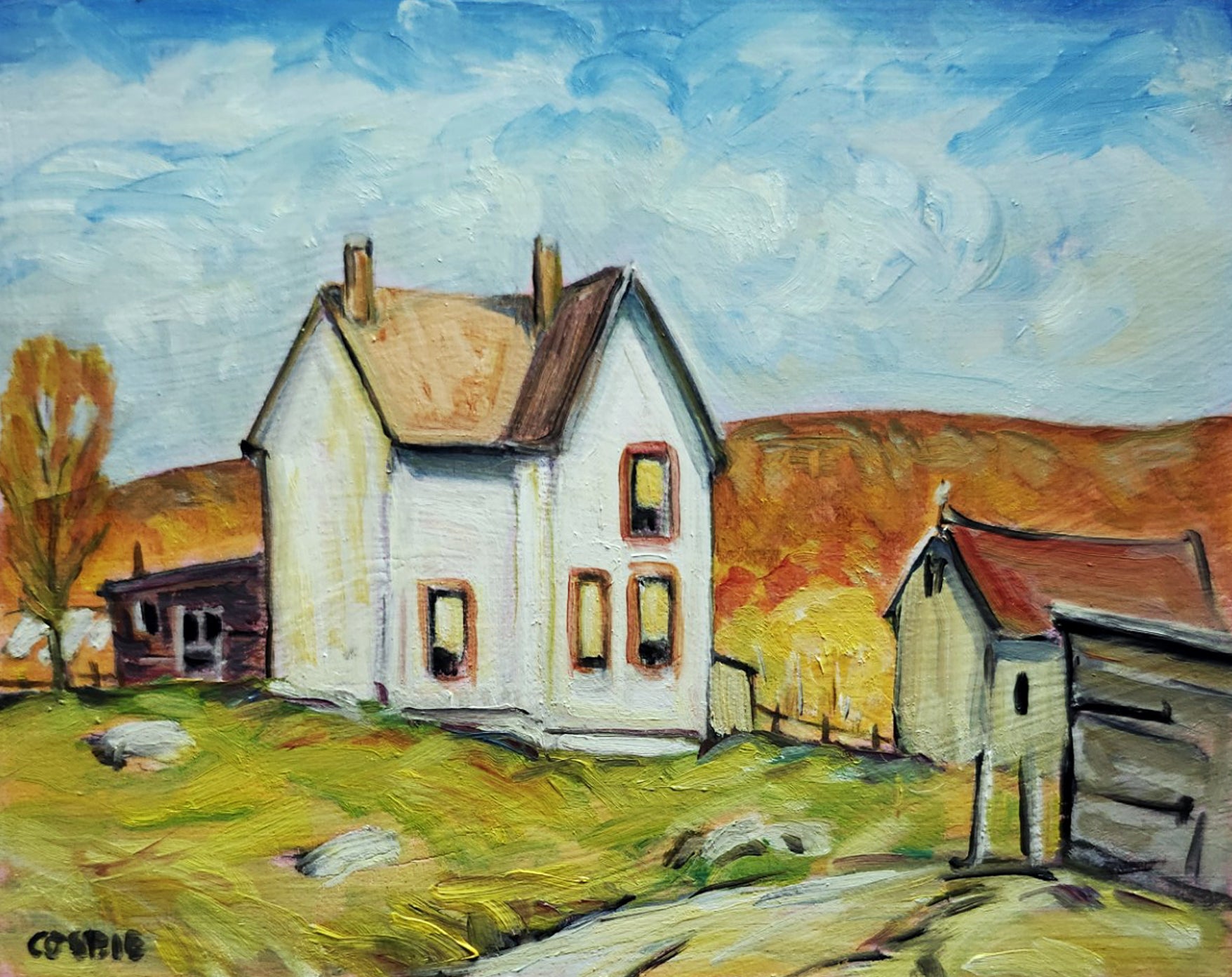Checking out Everything About Oil Paintings: An Overview to Recognizing Their Appeal and Value
Oil paints have astounded target markets for centuries, supplying a look right into the imaginative proficiency of various eras. Their abundant background is intertwined with innovative techniques and extensive psychological expression. Comprehending the materials and methods behind these art work can improve gratitude. Additionally, the market for oil paints offers chances for collection agencies and investors alike. As one explores this remarkable globe, the inquiry occurs: what makes an oil paint genuinely important?
The History of Oil Paint: A Journey Via Time
Although oil paint has origins that go back to old times, it really flourished throughout the Renaissance, when artists uncovered its convenience and rich shade capacity. Early instances can be traced to the 7th century, with techniques progressing notably across societies. The medium ended up being noticeable in Northern Europe in the 15th century, especially via the jobs of artists like Jan van Eyck, who spearheaded its use for in-depth realistic look and lively tones. This period noted a separation from tempera paints, permitting better deepness and texture. As oil paint spread, it affected countless musicians, leading to masterpieces by renowned figures such as Leonardo da Vinci and Rembrandt. The tool's heritage proceeds, shaping the art world well into modern-day times.
Understanding Oil Paints: Materials and Techniques
As artists check out the globe of oil paints, they run into a diverse range of materials and methods that define this medium. The main parts of oil paint include pigments, which offer color, and drying out oils, such as linseed, that bind the pigments and assist in application. Numerous ingredients can change the paint's texture and drying time, improving flexibility. Methods like glazing, where clear layers are constructed up, and impasto, which involves applying thick paint, enable various aesthetic impacts. Furthermore, making use of brushes, scheme blades, and also fingers can create distinct structures and coatings. Recognizing these products and strategies allows musicians to fully express their creative thinking and attain the wanted effect in their artwork.
The Role of Color in Oil Paints
Color plays a critical role in oil paints, affecting both visual allure and emotional resonance. Comprehending color concept fundamentals, consisting of the connections between tones, can improve an artist's capacity to communicate mood and environment. In addition, mastering shade mixing methods enables for better depth and splendor in a painting's combination.

Shade Theory Fundamentals
Recognizing shade theory is vital for musicians collaborating with oil paints, as it forms the structure for producing unified and aesthetically engaging structures. Color concept incorporates the research study of how shades communicate, the shade wheel, and the connections in between main, secondary, and tertiary colors. Artists utilize corresponding colors to enhance contrasts and develop centerpieces, while analogous shades promote unity and cohesiveness within a piece. In addition, the ideas of warm and cool shades influence the assumption of depth and area in a paint. Comprehending these concepts allows musicians to manipulate color efficiently, assisting the viewer's eye and interacting their desired message. Mastery of color concept inevitably enriches a musician's capability to communicate feelings and ideas through their work.
Emotional Impact of Shade
The psychological impact of color in oil paints plays a crucial duty in how customers regard and connect with artwork. Colors stimulate details feelings and moods, affecting the audience's psychological state. Warm colors like oranges and reds can develop a sense of warmth and energy, while great tones such as blues and greens frequently evoke calmness or self-questioning. Artists purposefully choose color combinations to enhance narrative components, guiding the target market's emotional trip. The saturation and comparison of colors further amplify these effects, drawing focus and developing focus. Ultimately, the interplay of colors in oil paints not just boosts their visual allure yet additionally works as a powerful tool for emotional expression, improving the customer's experience and analysis.
Shade Combining Techniques
While lots of facets of oil paint add to the general structure, grasping color mixing techniques is important for accomplishing preferred impacts and depth. Color blending can be come close to with different techniques, including the additive and subtractive processes. Additive mixing involves incorporating colors of light, while subtractive blending depends on pigments, where colors mix to create brand-new shades. Musicians commonly make use of a restricted palette to create unified works, comprehending the relationships between key, additional, and tertiary colors. Techniques such as glazing and scumbling further enhance deepness and luminosity. By masterfully mixing colors, a musician can evoke feelings, create focal factors, and achieve a feeling of realism, inevitably elevating the painting's aesthetic and emotional influence.
Famous Oil Painters and Their Iconic Functions

Famous for their proficiency of color and method, oil painters have actually created a few of the most renowned art work in history. Popular artists like Vincent van Gogh mesmerized audiences with his emotive brushwork in "Starry Night," while Claude Monet's "Impression, Dawn" laid the foundation for Impressionism. Leonardo da Vinci's "Mona Lisa" stays a long-lasting sign of creative brilliant, showcasing his ability in catching human expression. Rembrandt's "The Night Watch" illustrates his innovative usage of light and darkness. Various other significant figures include Pablo Picasso, who revolutionized modern-day art with his vibrant experimentation in works like "Les Demoiselles d'Avignon," and website Georgia O'Keeffe, whose dynamic depictions of flowers and landscapes aided specify American modernism. Each musician's distinct style added substantially to the oil paint landscape.
Exactly how to Examine the Top Quality of an Oil Paint
Reviewing the high quality of an oil painting entails a mindful evaluation of craftsmanship strategies, in addition to an analysis of shade and structure. Observing brushwork, layering, and the application of paint can disclose the musician's ability degree. Furthermore, the interplay of colors and the overall arrangement of elements add substantially to the paint's aesthetic value.
Evaluating Craftsmanship Techniques
A thorough analysis of workmanship methods is vital for figuring out the high quality of an oil paint. Evaluators ought to initially check out the application of paint; thick, textured brushstrokes may recommend a knowledgeable hand, while excessively uniform applications can suggest a lack of deepness. oil paintings for sale. The layering strategy is additionally important; the presence of lusters and varied density can improve luminosity and intricacy. Additionally, the top quality of the materials used, such as the canvas and pigments, plays a significant duty in toughness and general visual. Interest to information in aspects like sides and changes in between colors shows the artist's dedication to their craft. Ultimately, these strategies add to the paint's emotional influence and market value, working as indicators of the musician's skill and intent
Examining Color and Structure
While evaluating the quality of an oil paint, one have to concentrate on the interplay of color and structure, as these components are essential to the artwork's general impact. Color selections can evoke feelings and establish state of mind; therefore, the artist's scheme should be checked out for consistency and contrast. A well-balanced composition routes the viewer's eye and develops a feeling of unity. Artists usually employ techniques like the regulation of thirds or leading lines to enhance aesthetic interest. Additionally, the use of light and shadow can include deepness, boosting the three-dimensionality of the painting. Ultimately, a successful oil painting weds shade and composition, engaging the visitor and inviting a much deeper gratitude of the artist's vision and method.
Taking care of and Preserving Oil Paintings
Appropriate care and conservation of oil paints is essential for maintaining their honesty and long life. To secure these artworks, it is vital to display them far from direct sunlight, which can create fading and staining. Maintaining a stable environment with regulated temperature level and humidity more help in stopping damage. Cleaning ought to be done gently using a soft, dry towel, avoiding any kind of rough chemicals that can damage the paint or varnish. Normal inspections for signs of damage, such as flaking or splitting, are advisable. When keeping or transporting oil paints, correct cushioning and framework are required to prevent physical harm. Eventually, persistent treatment adds to the visual allure and value of oil paintings with time.
The Market for Oil Paints: Spending and collecting
Recognizing the market dynamics for oil paintings is crucial for capitalists and collection agencies alike. The worth of these art work is influenced by various variables, consisting of the artist's online reputation, historical relevance, and existing trends. Collection agencies usually seek pieces that resonate directly while considering prospective admiration in worth. Public auctions and galleries act as key locations for trading, with prices changing based on demand and rarity. Purchasing oil paints requires study into the marketplace, as well as an understanding of authenticity and provenance. In addition, arising musicians may offer chances for substantial returns, while developed names can regulate high rates. In general, a strategic technique to gathering can generate both aesthetic enjoyment and economic incentives.

Frequently Asked Questions
What Are the Ecological Impacts of Oil Painting Products?
The environmental impacts of oil painting products include the release of volatile natural compounds (VOCs), damaging waste generation, and source removal for pigments. These elements add to pollution and ecological deterioration, raising issues among ecologically mindful artists and consumers.
How Do Different Canvases Affect Oil Painting Outcomes?
Different canvases influence oil paint results considerably. Absorbency, texture, and surface high quality can change paint application, drying times, and color vibrancy. Artists frequently choose specific canvases to attain wanted results and improve their creative expression.
Can Oil Paintings Be Restored if Harmed?
Oil paints can undoubtedly be recovered if harmed. Expert conservators use different strategies to repair splits, tidy surfaces, and address discoloration, ensuring that the art work retains its initial appeal and value for future generations.
What Are the Indicators of an Initial Oil Painting?
The indicators of an original oil paint include visible brush strokes, structure variations, and an irregular canvas weave (oil paintings for sale). Furthermore, credibility might be validated through provenance, trademarks, and the visibility of a varnish layer special to oil mediums
Just How Has Technology Influenced Modern Oil Paint Techniques?
Modern technology has substantially affected contemporary oil painting techniques by presenting digital devices for planning, boosted materials for structure and longevity, and on the internet platforms for marketing and sharing art, thereby expanding artists' creative opportunities and target market get to. Oil painting has origins that date back to old times, it really prospered during the Renaissance, when artists uncovered its flexibility and abundant color potential. The psychological influence of color in oil paintings plays an important duty in how customers link and regard with artwork. While lots of aspects of oil painting add to the total composition, grasping shade blending strategies is important for accomplishing wanted effects and depth. Reviewing the quality of an oil painting includes a cautious assessment of craftsmanship methods, as well as an evaluation of shade and make-up. While evaluating the quality of an oil painting, one need to concentrate on the interplay of shade and composition, as these aspects are fundamental to the art work's overall influence.